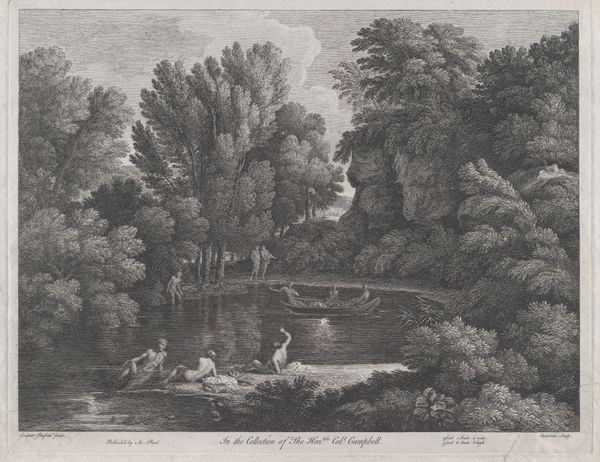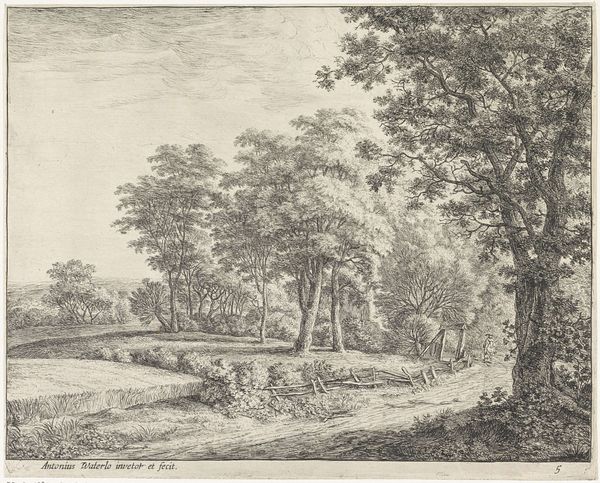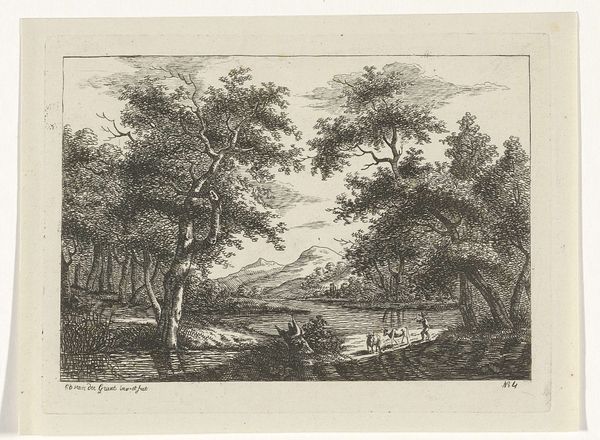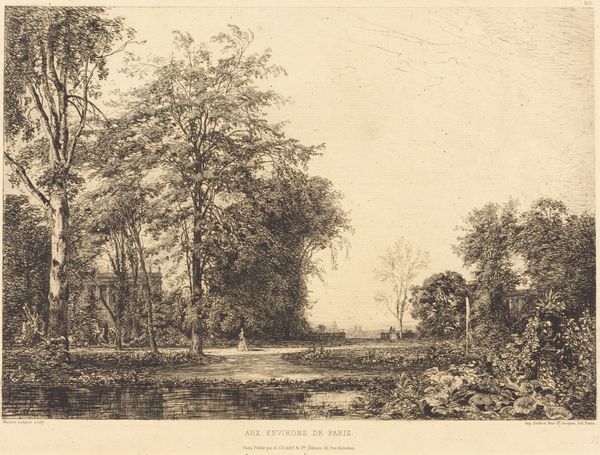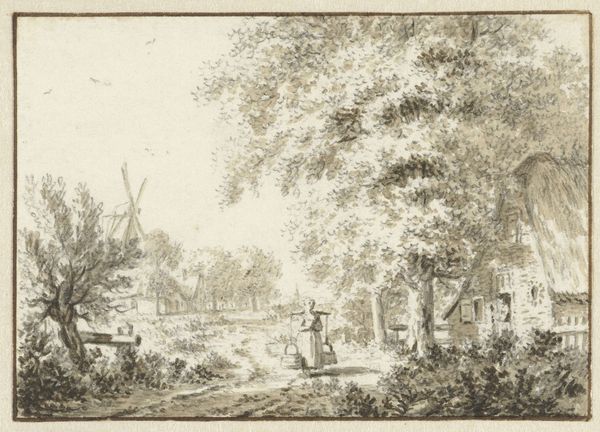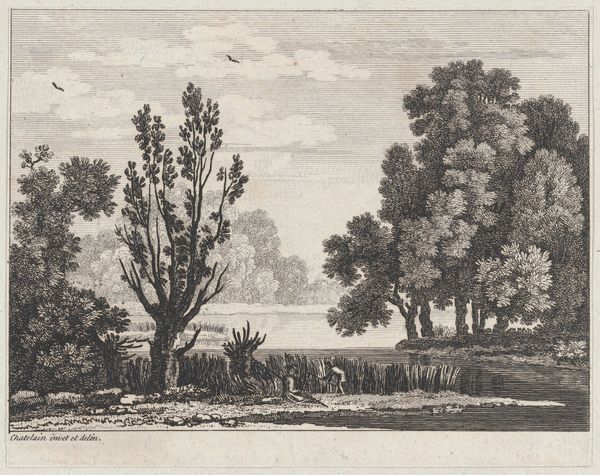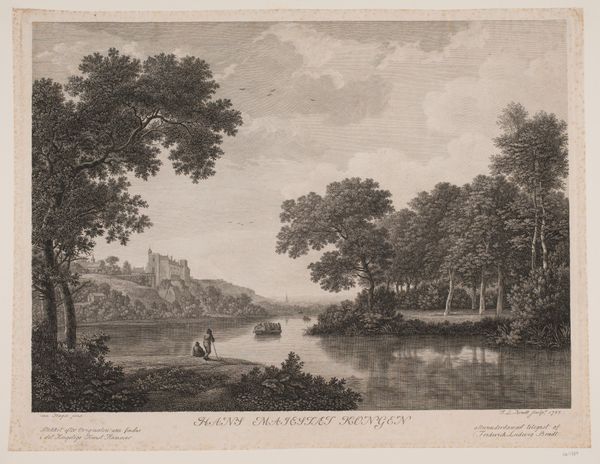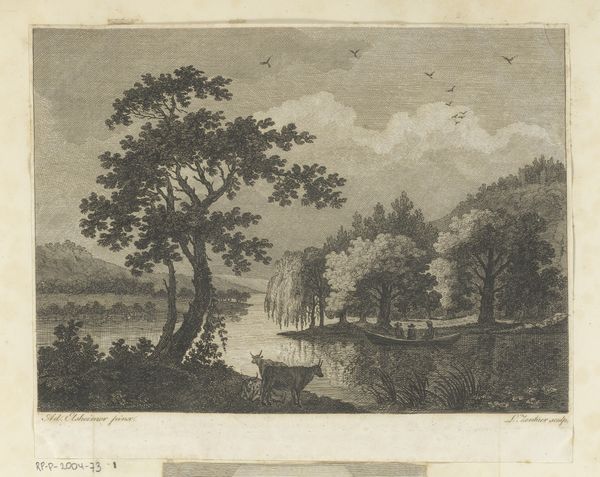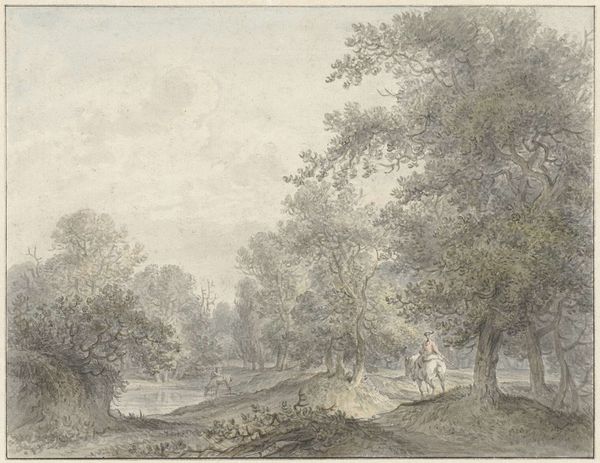
Dimensions: height 207 mm, width 241 mm
Copyright: Rijks Museum: Open Domain
Curator: "Sloep op de Charante," or "Boat on the Charente" by Louis Simon Lempereur. Created sometime between 1738 and 1807. It is a lovely etching here at the Rijksmuseum. Editor: It has a surprisingly somber feel, given it depicts a simple river scene. The monochrome amplifies the subtle drama in the sky. It seems to mirror a feeling of contemplation, almost loneliness. Curator: Etchings, particularly during the Baroque period, served as a method of distributing imagery. You have the lone boatman, rendered through very fine line work that was economical. Notice the composition creates a serene landscape with the river banks, almost staged for viewing, much like a theatrical backdrop. Editor: And who is permitted such viewing? I immediately wonder about class dynamics; such 'simple' leisure for whom, at what cost? How does this fit into the colonial structures of its time? We need to critically examine the romanticization of rural life and landscapes... Curator: Of course. However, observe the specific symbols: the reflections on the water mirroring the sky above. Symbolically it shows an ephemeral dreamlike quality, life imitating nature or visa-versa. It brings a transcendental idea that humans exist connected to nature, which brings an underlying connection to divinity in secular life. The Charente river mirrors both earthly and ethereal, if that is not overreaching, what do you think? Editor: It's a delicate point but I am on board. If we examine rivers more widely and their symbolic status, though...rivers often signify boundaries, divides. Access would’ve certainly been mediated by social status at this time. The solitary figure suggests a level of self-sufficiency maybe unattainable to other groups? Perhaps more so the commoners? The etching almost sanitizes this. Curator: It offers perhaps both sides. We can see a longing of freedom for common folk within constraint as we both examine nature as refuge, a divinity, or a physical space to toil. Editor: Point taken. It invites several points of departure when observing it; something indeed valuable in a piece. Curator: I agree. Hopefully, now the visitors may examine this etching with these different, important nuances and meanings in mind.
Comments
No comments
Be the first to comment and join the conversation on the ultimate creative platform.
